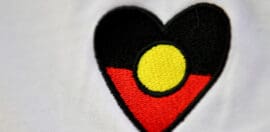Indigenous partnership could be the ‘circuit breaker’ in closing the gap

12 February 2020 at 4:45 pm
Australia is on track to meet just two of the seven Closing the Gap targets
Indigenous peak organisations say they now have an unprecedented opportunity to change the lives of Aboriginal Australians, following the release of the 2020 Closing the Gap report.
Prime Minister Scott Morrison told Parliament on Wednesday that the release of this year’s report, which shows little progress on the majority of targets, marked a new era in the approach to closing the gap between Indigenous and non-Indigenous people.
“Without a true partnership with Aboriginal and Torres Strait Islander people, we will hamper our own progress,” Morrison said.
It follows a 12-month-old agreement between governments and a council of over 40 Indigenous peak organisations that promised to give Aboriginal leaders more say in how Closing the Gap targets were met.
Pat Turner, the co-chair of the Joint Council on Closing the Gap, said the poor findings in this year’s report and previous year’s reports confirmed the need for a fundamentally new approach.
“The truth is that the existing Closing the Gap framework was doomed to fail when it was designed without the input of Aboriginal and Torres Strait Islander people,” Turner said.
“We know what will work best for our communities and the prime minister even acknowledges in this report that our voice was the missing ingredient from the original framework.”
Just two out of seven targets on track
The 2020 report card – the 12th since the targets were set in 2008 – revealed that five out of the seven targets designed to reduce the disparity in health, education and employment outcomes between Indigenous and non-Indigenous people have not been met.
The deadline for four of those targets was 2018.
The target of getting 95 per cent of Aboriginal and Torres Strait Islander four-year-olds enrolled in early childhood education by 2025 was found to be on track, with an enrolment rate of 86.4 per cent in 2018, compared with 91.3 per cent of non-Indigenous children.
Halving the year 12 attainment gap between Indigenous and non-Indigenous children by 2020 was also found to be on track.
But in the areas of child mortality, school attendance, life expectancy, reading and numeracy, and employment there has been little improvement, and in some cases, it has worsened.
In 2018, the Indigenous child mortality rate was 141 per 100,000 – twice the rate for non-Indigenous children, which sits at 67 per 100,000. The rate has improved by just 7 per cent since 2008, while non-Indigenous rates have improved by 35 per cent, leading to a widening of the gap.
School attendance in 2018 worsened slightly, and the goal to halve the gap in reading, writing and numeracy over the decade was not met. The proportion of Indigenous students meeting national minimum standards in reading and numeracy did improve however.
The life expectancy for an Indigenous male in 2015-17 was 71.6 years (8.6 years less than a non-Indigenous male), and 75.6 years for Indigenous females (7.8 years less than non-Indigenous females).
And in 2018, employment rates for Indigenous people sat at 49 per cent, compared to 75 per cent for non-Indigenous Australians.
The circuit breaker
Despite the negative findings in the report, Turner said there had never been an opportunity before for Aboriginal and Torres Strait Islander peak bodies to collectively use their expertise to close the gap.
“It is hard not to get overwhelmed by the lack of progress… I’m hopeful the renewed policy will be a circuit breaker,” she said.
She said the new Closing the Gap targets could be signed off by June, with the committee aiming for a maximum of 15 national targets, including new ones such as justice.
“This historic partnership could be the circuit-breaker that is needed,” she said.
“However, if they view this process as little more than window dressing for the status quo, the cycle of failure evident in today’s report is doomed to continue.”








